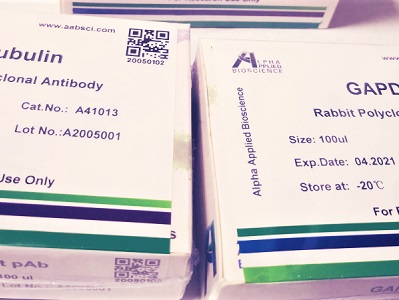

PSK-H1 rabbit pAb
Cat :A20294
-
Source
Rabbit
-
Applications
WB,IHC,ELISA
-
Reactivity
Human,Mouse
-
Dilution
WB: 1:500 - 1:2000. IHC: 1:100 - 1:300. ELISA: 1:20000. Not yet tested in other applications.
-
Storage
-20°C/1 year
-
Specificity
PSK-H1 Polyclonal Antibody detects endogenous levels of PSK-H1 protein.
-
Source/Purification
The antibody was affinity-purified from rabbit antiserum by affinity-chromatography using epitope-specific immunogen.
-
Immunogen
The antiserum was produced against synthesized peptide derived from human KPSH1. AA range:261-310
-
Uniprot No
P11801
-
Alternative names
PSKH1; Serine/threonine-protein kinase H1; Protein serine kinase H1; PSK-H1
-
Form
Liquid in PBS containing 50% glycerol, 0.5% BSA and 0.02% sodium azide.
-
Clonality
Polyclonal
-
Isotype
IgG
-
Background
catalytic activity:ATP + a protein = ADP + a phosphoprotein.,enzyme regulation:Activity depends on Ca(2+) concentration.,function:May be a SFC-associated serine kinase (splicing factor compartment-associated serine kinase) with a role in intranuclear SR protein (non-snRNP splicing factors containing a serine/arginine-rich domain) trafficking and pre-mRNA processing.,PTM:Autophosphorylated on serine residues.,PTM:Myristoylated. Required for membrane association. Prerequisite for palmitoylation to occur.,PTM:Palmitoylated.,similarity:Belongs to the protein kinase superfamily. CAMK Ser/Thr protein kinase family.,similarity:Contains 1 protein kinase domain.,subcellular location:Localized in the Brefeldin A-sensitive Golgi compartment, at centrosomes, in the nucleus with a somewhat speckle-like presence, membrane-associated to the endoplasmic reticulum (ER) and the plasma membrane (PM), and more diffusely in the cytoplasm. Found to concentrate in splicing factor compartments (SFCs) within the nucleus of interphase cells. The acylation-negative form may be only cytoplasmic and nuclear. Acylation seems to allow the sequestering to the intracellular membranes. Myristoylation may mediate targeting to the intracellular non-Golgi membranes and palmitoylation may mediate the targeting to the Golgi membranes. Dual acylation is required to stabilize the interaction with Golgi membranes.,subunit:Homodimer.,tissue specificity:Expressed in all tissues and cell lines tested with the highest level of abundance in testis.,
-
Other
PSKH1, Serine/threonine-protein kinase H1
-
Mol.Wt (Da)
48035
-
Concentration
1 mg/ml
| Product | Reactivity | Applications | Conjugation | Catalog | Images |
|---|
-
 400-836-3211
400-836-3211
-
 support@aabsci.com
support@aabsci.com
-
β-actin rabbit pAb ...... >
-
β-actin rabbit pAb(A284) ...... >
-
Plant-actin rabbit pAb ...... >
-
β-tubulin mouse mAb(M7) ...... >
-
GAPDH mouse mAb(2B8) ...... >
-
GAPDH mouse mAb(PT0325) ...... >
-
Histone H3 rabbit pAb ...... >
-
Histone H3 rabbit pAb ...... >
-
COX IV mouse mAb(6C8) ...... >
-
GFP-Tag mouse mAb(1G6) ...... >
-
HA-Tag mouse mAb(1B10) ...... >
-
mCherry-Tag mouse mAb(6B3) ...... >










 400-836-3211
400-836-3211
